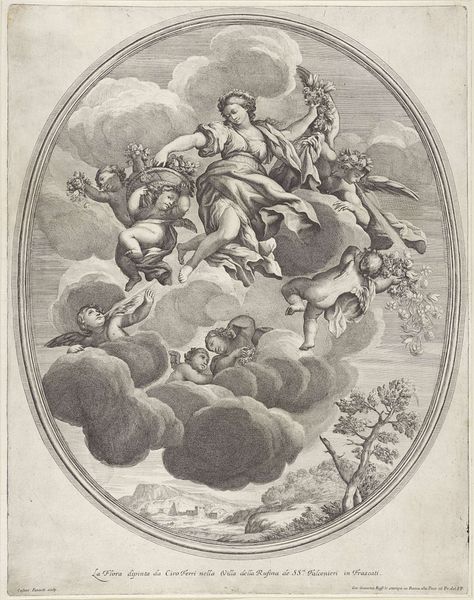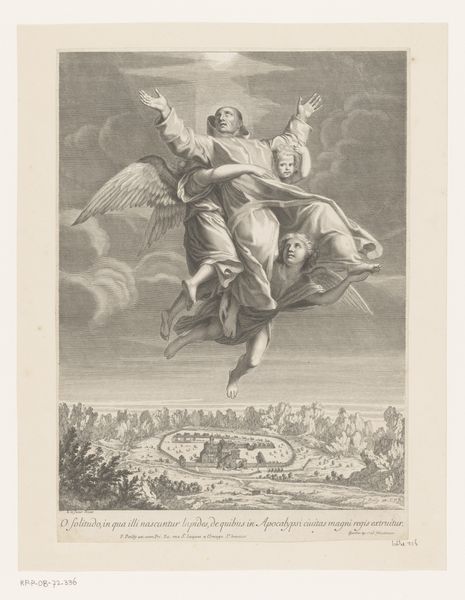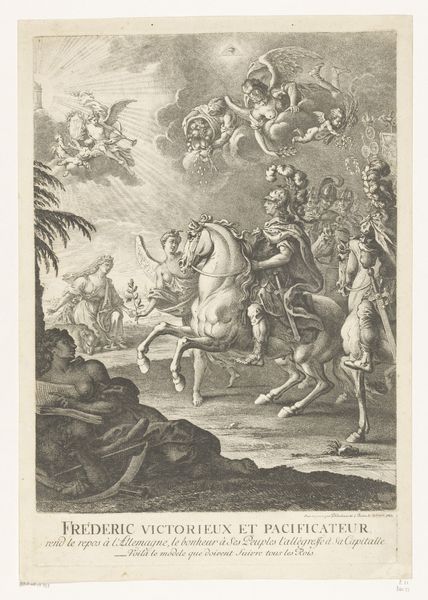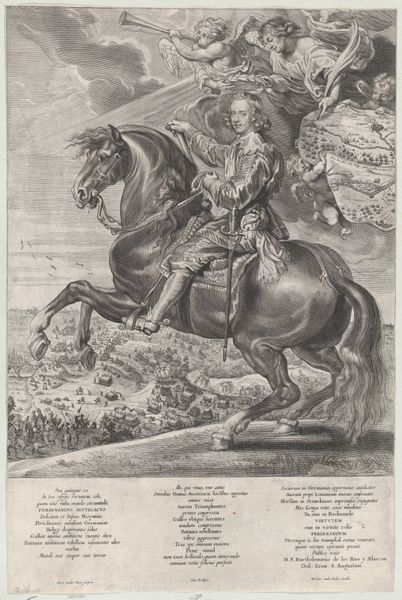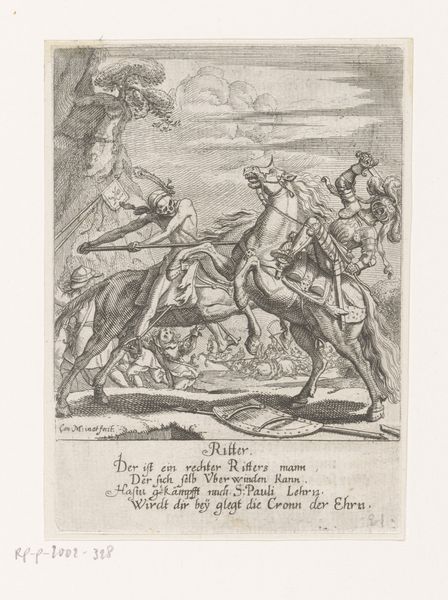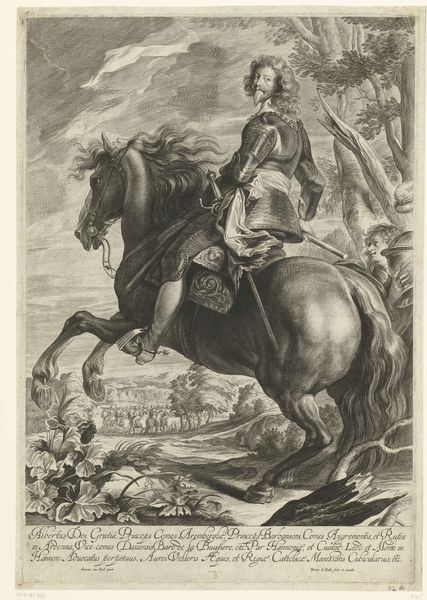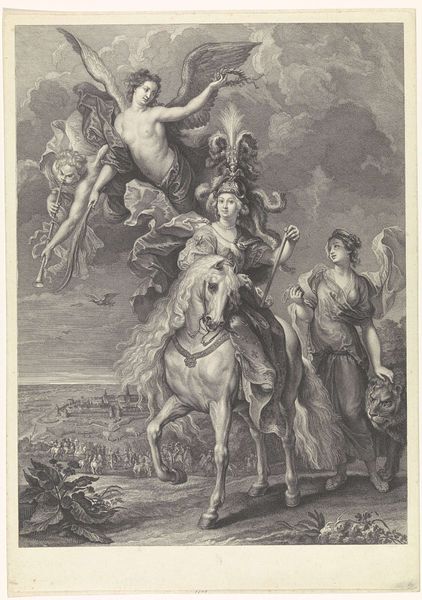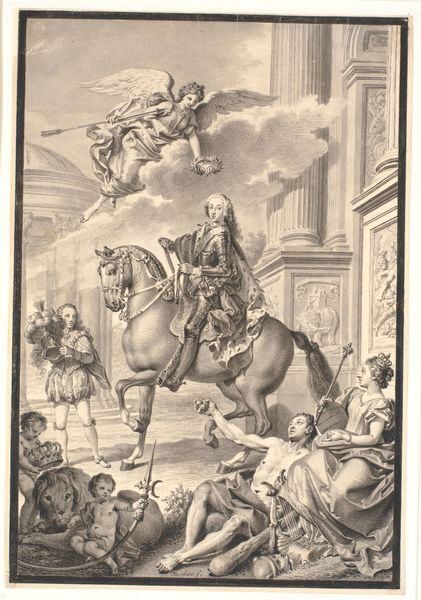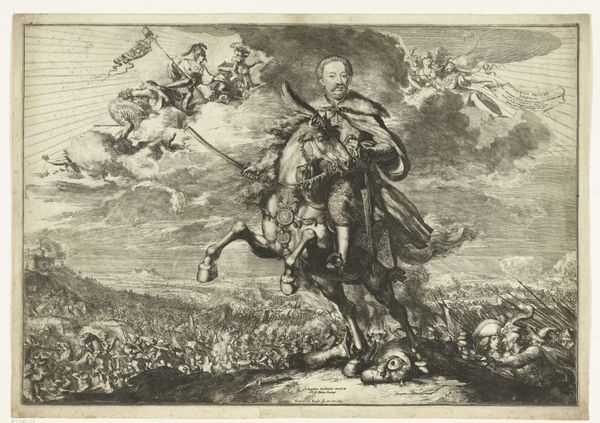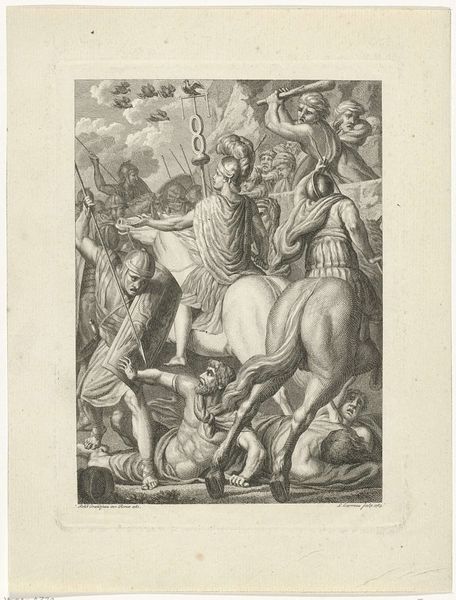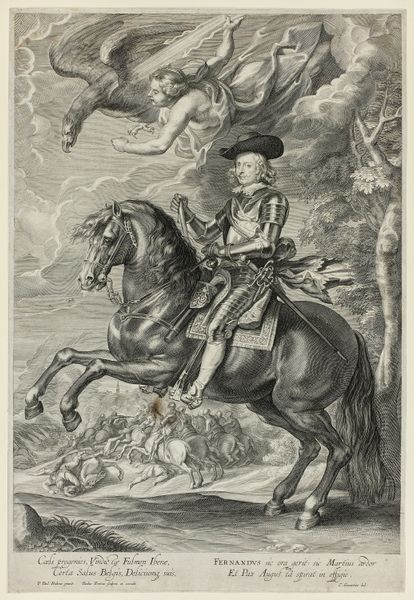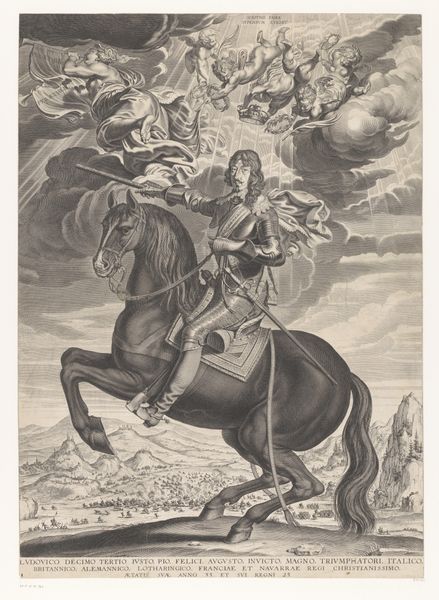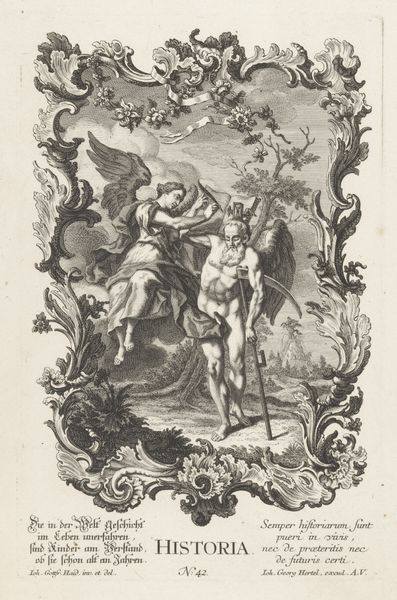
Ferdinand met Ferdinand, koning van Bohemen en Hongarije te paard bij de overwinning bij Nördlingen; intocht van Ferdinand te Gent in 1635 (nr. 10) Possibly 1635 - 1685
0:00
0:00
print, engraving
#
allegory
#
baroque
# print
#
old engraving style
#
landscape
#
figuration
#
history-painting
#
engraving
Dimensions: height 383 mm, width 256 mm
Copyright: Rijks Museum: Open Domain
Curator: This engraving by Pieter de Jode II, likely created between 1635 and 1685, depicts Ferdinand met Ferdinand, King of Bohemia and Hungary, celebrating the victory at Nördlingen and his entrance into Gent in 1635. Editor: What strikes me immediately is the sharp contrast – the stiff formality of the riders set against the almost caricatured collapse of the figures below, a dramatic flourish I find quite appealing. Curator: The drama serves a purpose, doesn’t it? It's steeped in the politics of imagery, particularly within the context of Ferdinand’s reign. The crushed figures beneath the horses clearly symbolize his vanquished enemies. It projects the undeniable authority of the Hapsburgs. Editor: Authority, yes, undeniably communicated through the vertical thrust of the composition, with the eye drawn upward toward the heavenly figures nestled among the clouds. There's a deliberate spatial organization that reinforces hierarchy and power. Curator: Absolutely. And note how de Jode strategically integrates allegory here; this wasn't just about commemorating military success. The presence of cherubic figures holding the Madonna and Child are an overt endorsement of divine justification. This also occurred at the height of the Counter-Reformation, so it reflects the period's strong religious and political narratives. Editor: The technique also contributes. The use of tightly-knit, controlled hatching creates a strong tonal range which models the forms carefully. The landscape, though receding, reinforces the picture plane due to the scale and the linear nature of the engraved lines. Curator: Considering it’s an engraving designed for broad distribution, its purpose was undoubtedly to broadcast a potent message about Ferdinand's divine right to rule and the consequences of opposition. Museums and collections, like the Rijksmuseum where this work resides, serve to reinforce and continue those interpretations for modern audiences. Editor: For me, even stripped of its original political potency, the work resonates due to the technical skill employed, that linear intricacy that conveys weight and movement. I appreciate how form communicates the historical content you described, highlighting how these are perpetually intertwined. Curator: Indeed. It offers an intriguing insight into the art and the act of projecting power during a turbulent period of European history. Editor: Agreed, I walk away seeing an exquisite exercise in conveying triumph, on multiple levels of consideration.
Comments
No comments
Be the first to comment and join the conversation on the ultimate creative platform.
